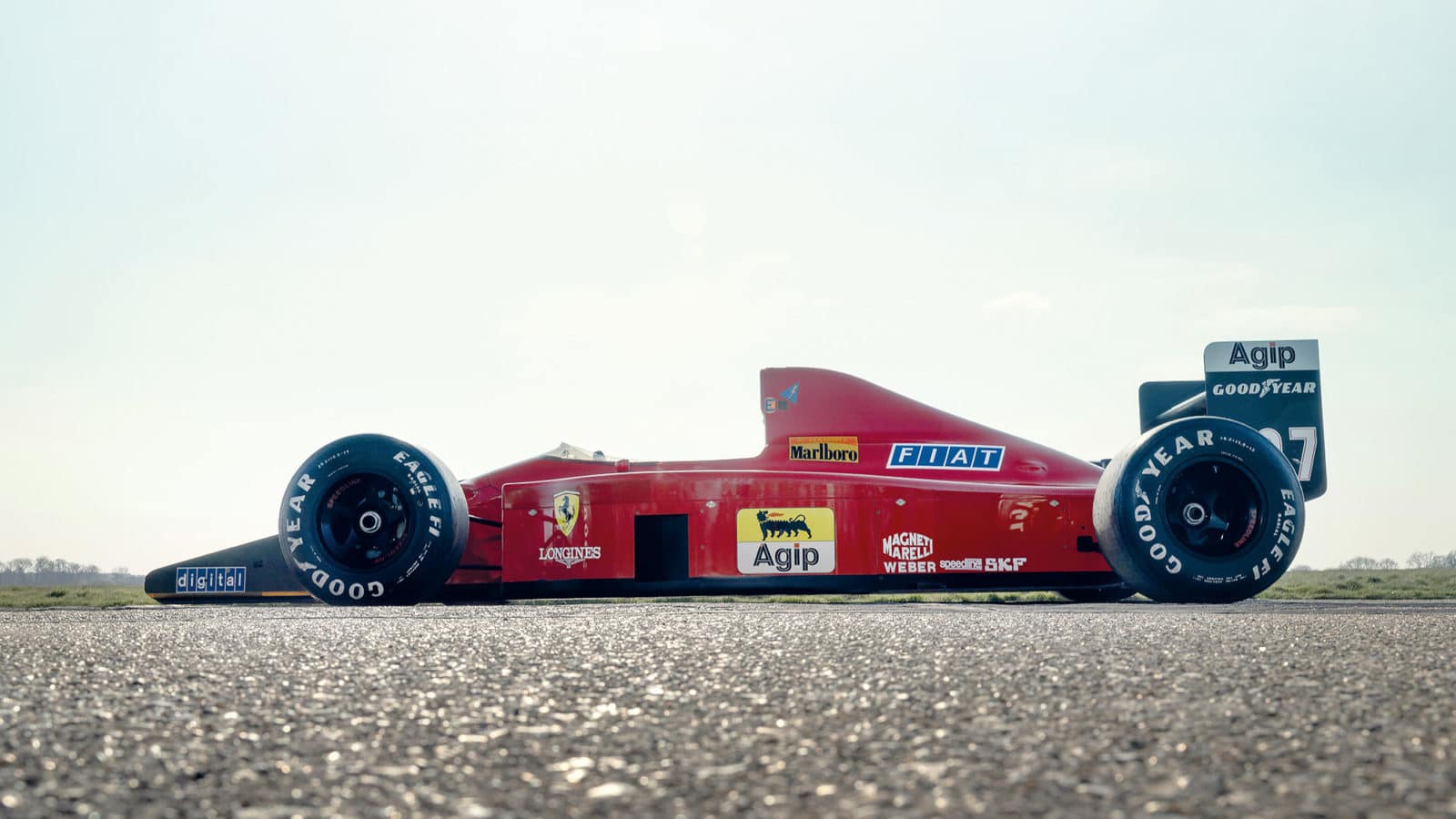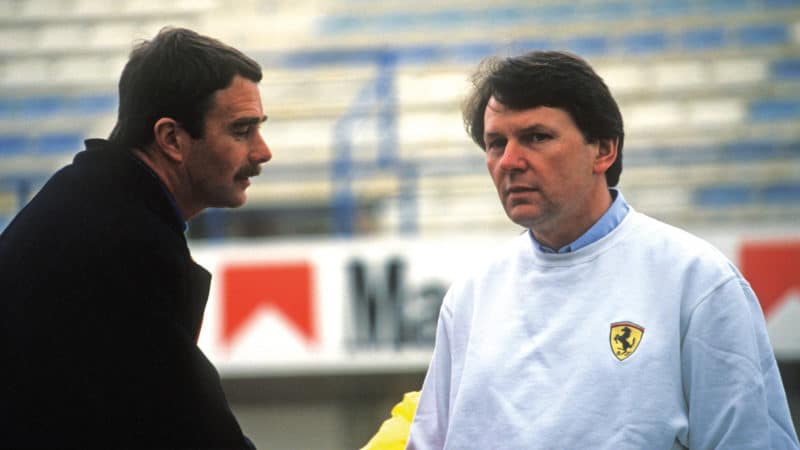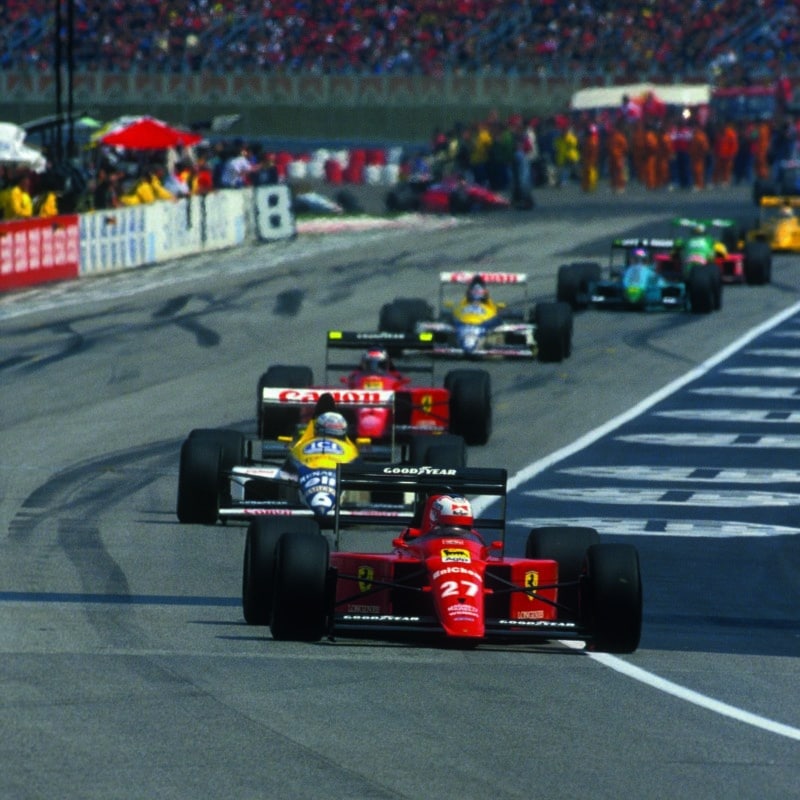Ferrari's 640: the 1989 flawed masterpiece 'that's still influencing F1 design'
James Elson meets John Barnard, the English architect of the Ferrari 640 F1 car

Lee Brimble
The Ferrari 640, with its slim lines, purposeful profile and ingenious technological innovations is the car many identify most with legendary F1 designer John Barnard.
A machine that, on the rare occasions that it did make the chequered flag, never finished lower than third, it could and arguably should have brought the Scuderia both the 1989 drivers’ and constructors’ titles.
The 640 arrived at a time of change at Ferrari: the loss of the team’s founder Enzo, a successor who despised the risk of Barnard’s innovations, reluctant staff suspicious of the foreign designer and a fervent national press who leapt upon every setback the 640 suffered.
Despite Barnard describing its inception as “a very difficult time,” he pushed through by “wanting to take the next step – it was a very important car for F1”.

Mansell with Barnard
After cleaning up through the early to mid ’80s with McLaren, Barnard fell for the allure of Ferrari and joined at the end of ’86 for his next challenge.
This came in the form of the 640, most noted for the then-highly unorthodox paddle-shift gearbox, which has now become ubiquitous in F1. The seeds of Barnard’s idea were planted when working out gear linkage issues for his 1980 Indy 500-winning Chaparral 2K. Fast forward to 1988 and Barnard had found his solution in the form of the semi-automatic paddleshift, which was first used on his stillborn Ferrari 639.
“The 639 was the first car that was designed specifically around that gearbox,” he explains. “By that, I mean the chassis was narrow. You couldn’t get a gear shift in it… that was my intention.”
The 639 never raced after fudged F1 engine rules (moving from turbo to naturally aspirated) meant it made more sense for Ferrari to run a development of its ’87 car again in ’88. However, the 639 did act as a mule for 1989’s V12 640, when F1 would make a true break from turbos – not that things were quite that simple.
“The gearbox received the usual ‘What are we doing with this thing?’ at Maranello,” says Barnard. “Then the old man died. Enzo did manage to see the 639. He looked at it, smiled at me and slightly shook his head…”
It wasn’t just Enzo who would be against the new design. “Fiat management came in and things got political. Enzo’s replacement – Vittorio Ghidella – was extremely nervous of running the paddleshift. He thought he was the next Enzo and so couldn’t afford to have a failure on his hands – I stuck to my guns.”
Ghidella openly went against Barnard’s authority by ordering a traditional manual version of the car be created. “Nigel tried it at Fiorano, was a few seconds slower and said, ‘Oh, give me the paddleshift version!’”

Mansell leads at Imola in the Ferrari 640
Grand Prix Photo
This wasn’t the 640’s only innovation: “I was trying to neaten up the front. That’s when I came up with the short torsion bar arrangement driven through a rocking arm (instead of front springs/dampers). The shape of the car was me trying to close up the back. I wanted to tuck the tail in and get the radiator air flow to exit inside the bodywork, under the rear wing.”
Barnard may have managed to win his own team around, but he was also facing outside opposition. “We had awful reliability in testing. The newspapers in Italy kept saying, ‘Oh, the gearbox has packed up again,’ etc. It was really quite a difficult time for me.”
Later on in the season, the problem would be identified. “The alternator belt kept coming off. Then you don’t have any power and the gearbox packs in.”
Come the 640’s debut at Brazil ’89 though, things initially went well. Mansell blasted into the lead, before disaster struck. “Having been ‘Happy Nigel’ up to that point, he suddenly came on the radio in hysterics, saying the steering wheel was falling off!” remembers Barnard. “I said, ‘Christ Nigel, come in!’ It turned out two of its three bolts had come out. This was pretty crucial. All the electronics for the gearbox went through the steering wheel. There was a tiny little multi-pin plug in the centre of the steering column which communicated the signals from the paddle shifts. Nigel came in, we got the spare which we hadn’t even tested, just jammed it on and he drove off! Myself and my chief mechanic looked at each other: ‘There’s just no way that’s going to work straight off the bat, without being tested!’ But it did, and we won!”
The victorious chassis is the one Mansell is now selling – 109, which he also took to victory in Hungary that year. The 640 would never finish lower than third – the problem was that it rarely finished, and a frustrated Barnard would leave Ferrari soon after.
However, he still takes pride in a car which appears still to be influencing F1 design in 2022. “Effectively, it was trying to do what they do today. The paddle shift, the torsion bar, the closed-in bodywork around the back that you still see now is, in my opinion, a development of the 640.”
